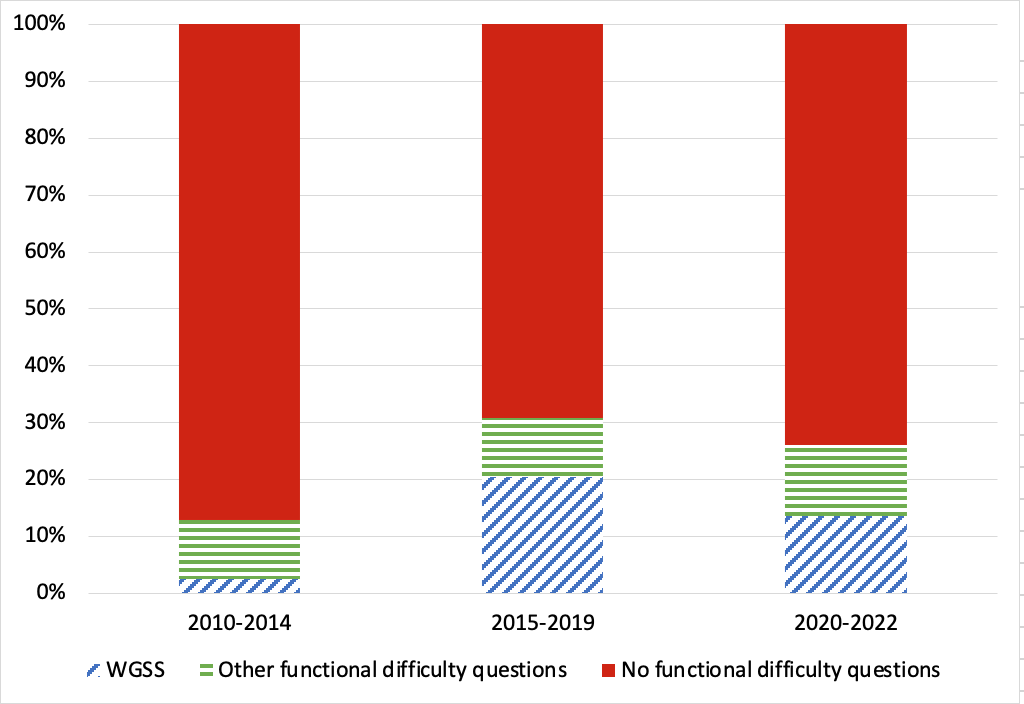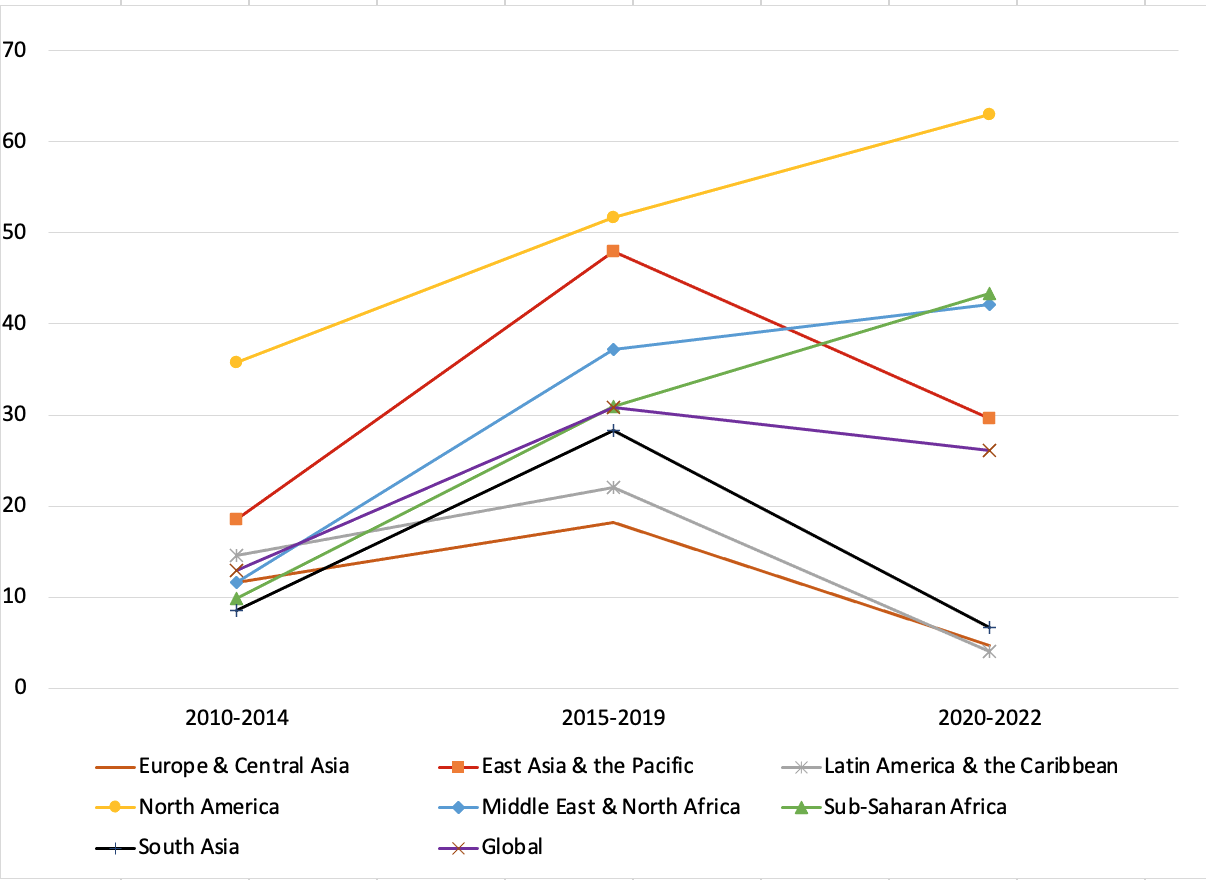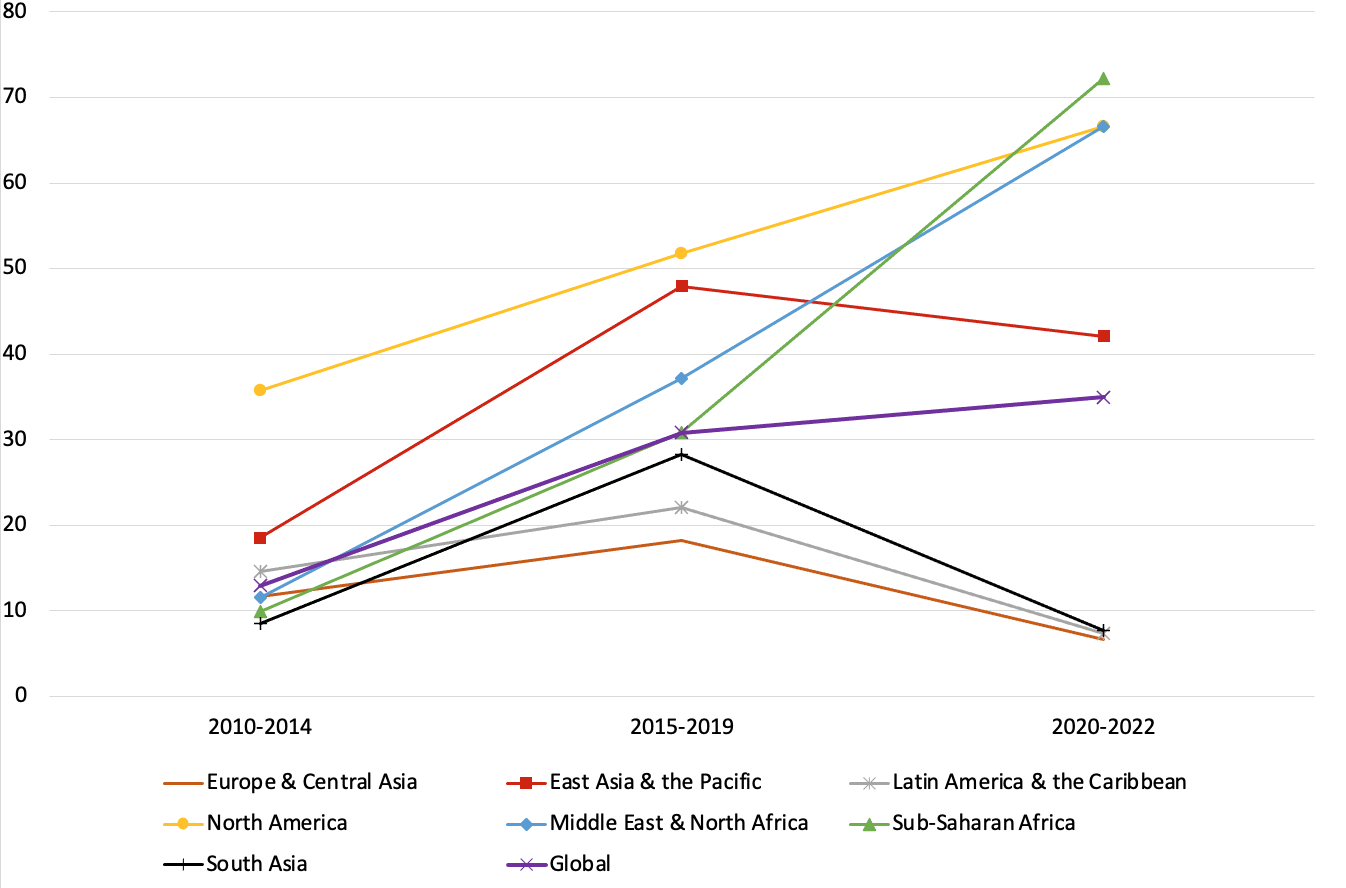Review of Datasets and their Disability Questions
Disability can be defined in various ways and the manner in which it is defined can have implications for the results of the ensuing analysis. Questions in surveys can vary depending on the definition of disability and on the objectives of the measurement exercise. Each dataset questionnaire was searched for disability questions that are internationally comparable as per the United Nations Principles and Recommendations for Population and Housing Censuses (2017, p. 207) for censuses. If disability questions were found, they were categorized as follows:
(i) questions of the Washington Group (WG) Short Set (WG-SS) covering six domains (seeing, hearing, walking, concentrating/remembering, self-care, communication);
(ii) Other functional difficulty questions (four to six of the domains in (i) but not the same wording as in the WG-SS questions and/or answers) need to cover at least the four essential domains of functional difficulties (seeing, hearing, walking, concentrating/remembering);
More information regarding the methodology is in Appendix 2.
This section adds to the work of the 2021 and 2022 Disability Data Reports (Mitra and Yap 2021, 2022) and includes 256 additional datasets (598 dataset-waves[1]): these datasets include recent datasets for 2022 and any additional datasets that were found for the 2009-2022 period. The resulting pool of censuses and surveys under consideration has 1,288 datasets and 2,616 dataset-waves from 188 countries and territories (countries thereafter) across all world regions. Of note for recent years are High Frequency Phone Surveys, which many countries collected during the pandemic. For High Frequency Phone Surveys, a pool of 91 datasets and 292 dataset-waves from 72 countries were screened for disability questions.
The overall results are presented and discussed below globally and by region. The entire set of results is available in the Dataset Review Results Tables.
Table 3.1 presents the numbers and shares of countries and datasets with functional difficulty questions based on our review: 125 out of 188 countries and 216 out of 1,288 datasets under review have functional difficulty questions in their surveys or censuses. Separating countries and surveys with the WG-SS and other functional difficulty questions, 70 countries and 141 datasets have the WG-SS while 77 countries and 142 datasets have other functional difficulty questions. Among datasets, 22% include functional difficulty questions, including 11% with the WG-SS.
Table 3.1: Overall results of the dataset review
| Countries or Datasets | Number of countries | Share of countries | Number of datasets | Share of datasets |
|---|---|---|---|---|
| Under review in the study | 188 | 100.0% | 1288 | 100% |
| With functional difficulty questions | 125 | 66.5% | 283 | 22% |
| With the Washington Group Short Set (WG-SS) | 70 | 37.2% | 141 | 10.9% |
| With other functional difficulty questions | 77 | 41.0% | 142 | 11% |
Notes: Functional difficulty questions could be the WG-SS or other functional difficulty questions. The number of countries with functional difficulty questions does not add up to the numbers of countries with the WG-SS and with other functional difficulty questions as some countries have both.
Source: Own calculations based on dataset questionnaire review, as described in the text.
Figure 3.1 illustrates these findings with a map of the world with countries categorized based on whether we found datasets with WG-SS, other functional difficulty questions or no functional difficulty questions.
Figure 3.1. Countries with functional difficulty questions (WG-SS or Other functional difficulty questions) and without functional difficulty questions in national censuses and surveys (2009-2022)

Figure 3.2 shows the breakdown of datasets depending on whether they have the WG-SS, other functional difficulty questions or no functional difficulty questions for three periods: 2010-2014, 2015-2019 and 2020-2022.
Figure 3.2: Share of datasets with WG-SS and Other functional difficulty questions over time

Notes: The number of datasets reviewed for each period is as follows: 727 for 2010-2014, 574 for 2015-2019 and 234 for 2020-2022.
Source: Own calculations based on dataset questionnaire review, as described in the text.
The share of datasets with functional difficulty questions shows an increase from 13% to 31% between 2010-2014 and 2015-2019 and then down to 26% in 2020-2022. This is driven by a sharp growth in the share of datasets with the WG-SS from 3% in 2010-2014 to 20% in 2015-2019, and down to 14% in 2020-2022. There was less variation in the share of datasets with other functional difficulty questions at about 10% during the three periods.
Figure 3.3 presents the share of datasets with functional difficulty questions, whether the WG-SS or other questions, globally and by region in 2010-2014, 2015-2019 and 2020-2022. Between 2010-2014 and 2015-2019, an increase is found in all regions except Europe & Central Asia. East Asia & the Pacific, the Middle East & North Africa, and Sub-Saharan Africa show the sharpest increases.
Figure 3.3: Share of datasets with functional difficulty questions globally and by region (%)

Notes: The number of datasets reviewed for each region is as follows: 213 in Europe & Central Asia, 150 in East Asia & the Pacific, 198 in Latin America & the Caribbean, 72 in North America, 107 in Middle East & North Africa, 450 in Sub-Saharan Africa and 98 in South Asia.
Source: Own calculations based on dataset questionnaire review, as described in the text.
Between 2015-2019 and 2020-2022, the decline that is observed globally is not consistently found across regions: North America, Sub-Saharan Africa and Middle East & North Africa continue to show an increase. These recent trends have contributed to growing heterogeneity across regions in terms of the availability of functional difficulty questions: in 2020-2022, the share of datasets with functional difficulty questions ranges from a low of 4% in Latin America & the Caribbean to a high of 63% in North America.
The 2020-2022 dataset period coincides with the COVID-19 pandemic when fewer data sets were available and many of the data sets under review are High Frequency Phone Surveys, which tend to disproportionately exclude disability questions. As shown in Figure 3.4, when removing High Frequency Phone Surveys, globally the share of datasets with functional difficulty questions is at 35% for 2020-22 (21% with WG-SS, 14% with other functional difficulty questions. This result is higher compared to when High Frequency Phone Surveys are included in the analysis at 26% (Figure 3.2).
Figure 3.4 also illustrates that, without High Frequency Phone Surveys, Sub-Saharan Africa is the region with the highest share of datasets with functional difficulty questions, followed by North America and Middle East & North Africa. Recent changes for other regions are overall similar to those in Figure 3.3.
Figure 3.4: Share of datasets with functional difficulty questions globally and by region, after excluding HFPS datasets (%)

Notes: The numbers of datasets reviewed for each region without High Frequency Phone Surveys are as follows: 200 in Europe & Central Asia, 142 in East Asia & the Pacific, 175 in Latin America & the Caribbean, 69 in North America, 100 in Middle East & North Africa, 415 in Sub-Saharan Africa and 96 in South Asia.
Source: Own calculations based on dataset questionnaire review, as described in the text.
Conclusion
Results show considerable heterogeneity in the availability of functional difficulty questions across regions and over time: for instance, in Europe & Central Asia, functional difficulty questions continue to be a rarity in surveys and censuses, while in Sub-Saharan Africa their availability has markedly increased.
Global trends suggest an increase in the usage of the WG-SS in national censuses and surveys during the 2010s. High Frequently Phone Surveys which were launched by countries and some international organizations to track populations’ situations and evaluate the impacts of lockdowns and other COVID-19 related policies largely did not include the WG-SS. This seems to have driven the share of datasets with the WG-SS down during the 2020-2022 period.
Some countries prepare to implement their censuses after a halt of statistical activities due to the COVID 19 pandemic. There is now a window of opportunity to collect data on persons with disabilities by including questions on functional difficulties to inform policy development and implementation in accordance with Article 31 of the CRPD and the 2030 Agenda.
[1] For datasets that are rolled-out as part of several rounds, each round is reviewed separately; we use the term dataset-wave to refer to one individual round of collection for a given dataset. Dataset-waves may be part of a longitudinal dataset or repeated cross-sections.
